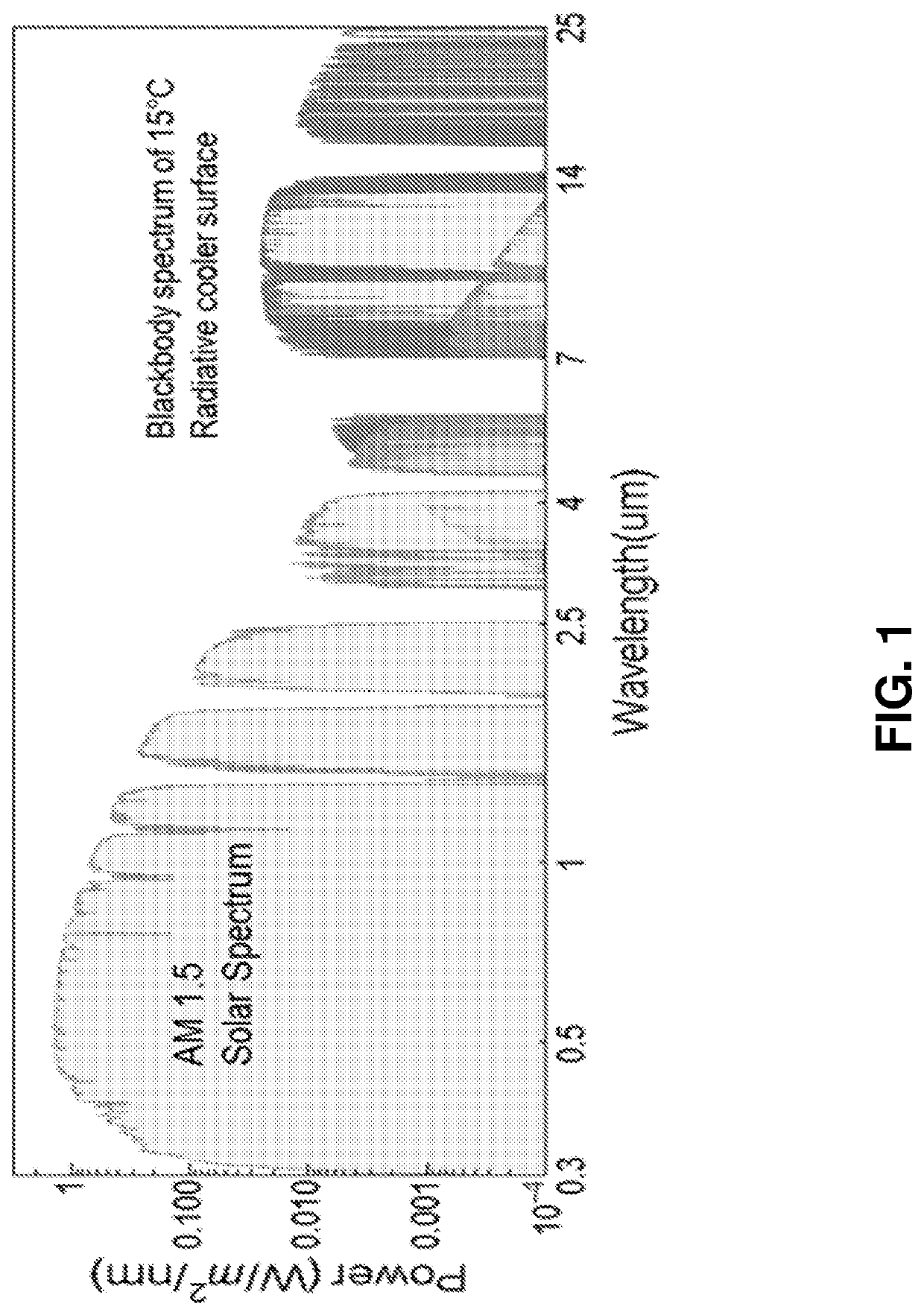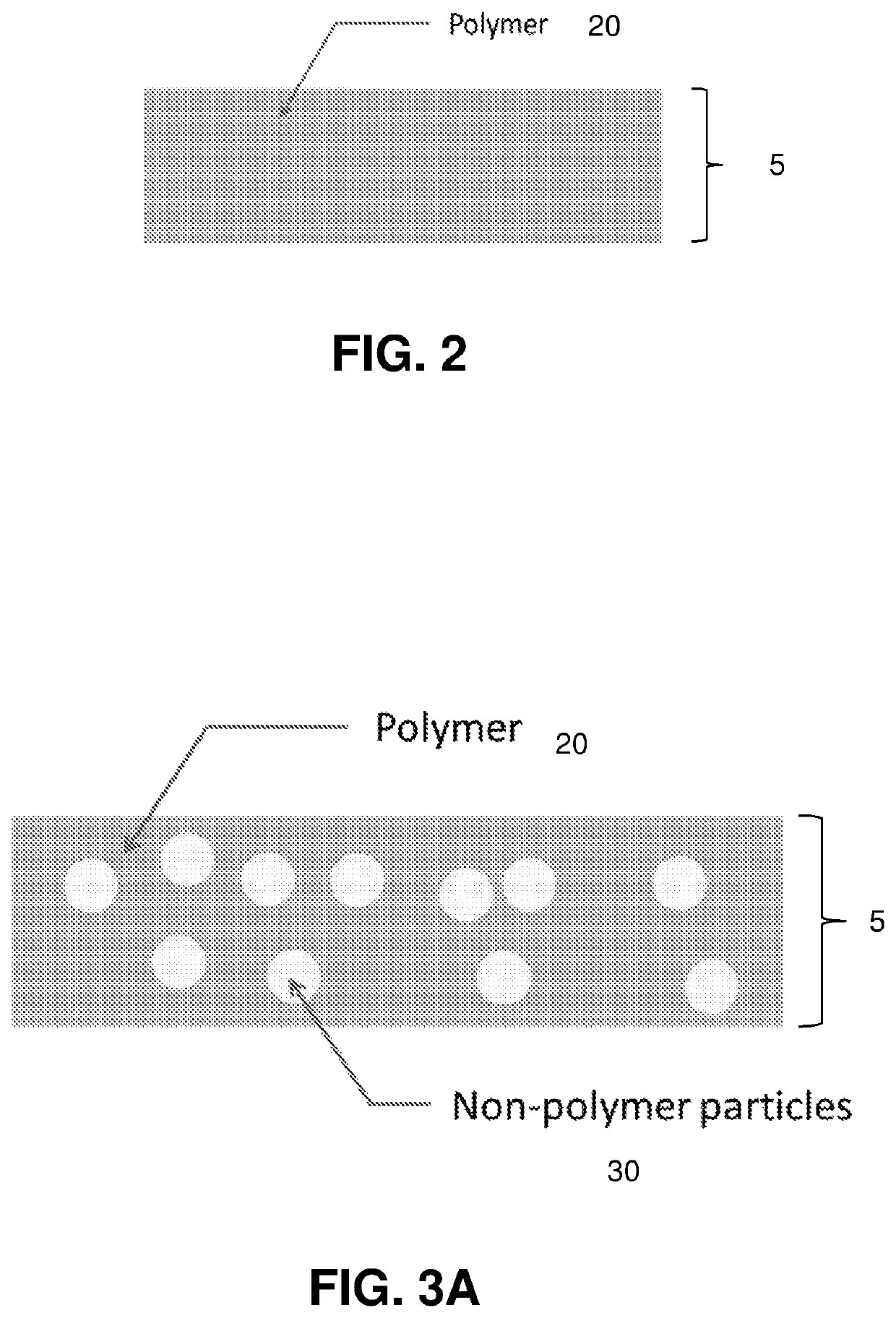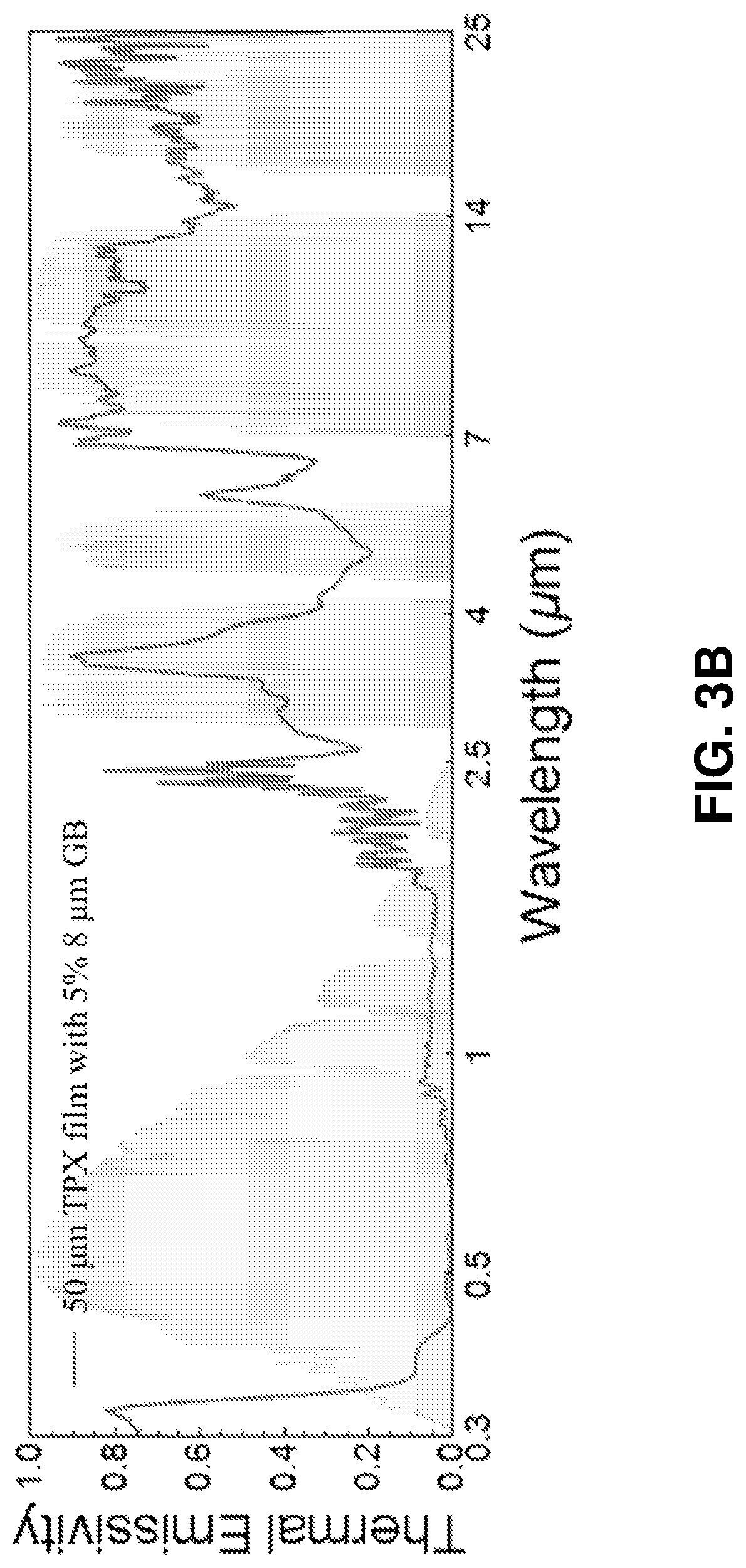Radiative cooling structures and systems
a cooling structure and radiation technology, applied in the field of radiation cooling structures and systems, can solve the problems of large power density mismatch between, and achieve the effects of convenient production and integration, low cost, and improved efficiency
- Summary
- Abstract
- Description
- Claims
- Application Information
AI Technical Summary
Benefits of technology
Problems solved by technology
Method used
Image
Examples
example 1
lpentene-Based Radiative Cooling Films
[0128]FIG. 13A shows the emissivity / absorptivity as a function of electromagnetic wavelength for a 50-μm-thick bare polymethylpentene (TPX™) films and a 50 μm thick film with 5% 8-μm-diameter solid silica microspheres. The trace for the TPX™ film is lighter gray than the trace for the composite film. Polymethylpentene is index-matched with silica in the solar spectrum, but not in the infrared spectrum. The polymethylpentene film mixed with silica microspheres results in a high emissivity at IR wavelengths of 7-13 μm. Without wishing to be bound by any particular belief, the silica spheres are believed to act as infrared scatterers and resonantly interact with infrared radiation, contributing to improved infrared emissivity of the films.
[0129]FIG. 13B shows the emissivity / absorptivity as a function of wavelength for polymethylpentene films of different thickness with 5% volumetric fraction of 8-μm-diameter solid silica microspheres. (key: 50 μm f...
example 2
Manufactured Randomized Glass-Polymer Hybrid Metamaterial for Day-time Radiative Cooling
[0132]Passive radiative cooling draws heat from surfaces and radiates it into space as infrared radiation to which the atmosphere is transparent. However, the energy density mismatch between solar irradiance and the low infrared radiation flux from a near-ambient-temperature surface require materials that strongly emit thermal energy and barely absorb sunlight. We embedded resonant polar dielectric microspheres randomly in a polymeric matrix, resulting in a metamaterial that is fully transparent to the solar spectrum while having an infrared emissivity greater than 0.93 across the atmospheric window. When backed with silver coating, the metamaterial shows a noon-time radiative cooling power of 93 W / m2 under direct sunshine. More critically, we demonstrated high-throughput, economical roll-to-roll manufacturing of the metamaterial, vital for promoting radiative cooling as a viable energy technolog...
PUM
| Property | Measurement | Unit |
|---|---|---|
| size | aaaaa | aaaaa |
| thickness | aaaaa | aaaaa |
| wavelength | aaaaa | aaaaa |
Abstract
Description
Claims
Application Information
 Login to View More
Login to View More - R&D
- Intellectual Property
- Life Sciences
- Materials
- Tech Scout
- Unparalleled Data Quality
- Higher Quality Content
- 60% Fewer Hallucinations
Browse by: Latest US Patents, China's latest patents, Technical Efficacy Thesaurus, Application Domain, Technology Topic, Popular Technical Reports.
© 2025 PatSnap. All rights reserved.Legal|Privacy policy|Modern Slavery Act Transparency Statement|Sitemap|About US| Contact US: help@patsnap.com



